Florian Laws
Attend, Copy, Parse - End-to-end information extraction from documents
Dec 18, 2018
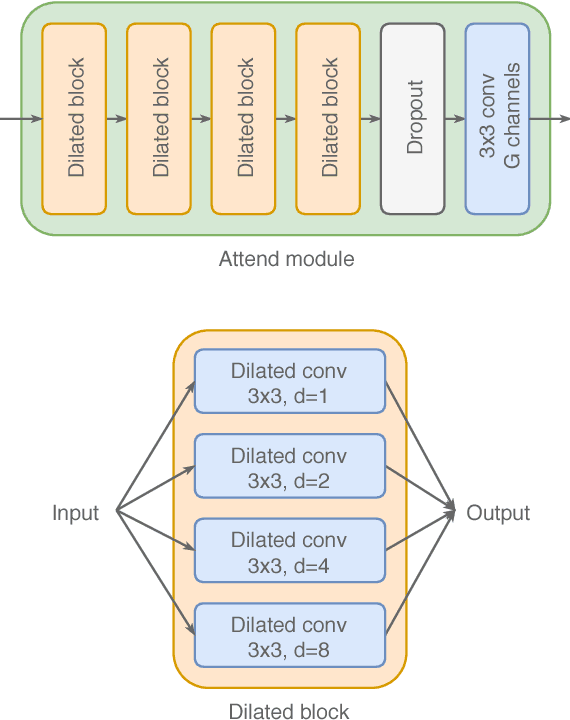
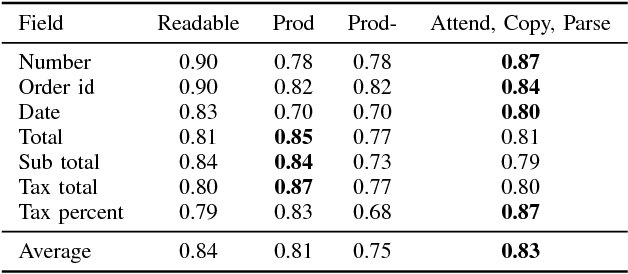
Abstract:Document information extraction tasks performed by humans create data consisting of a PDF or document image input, and extracted string outputs. This end-to-end data is naturally consumed and produced when performing the task because it is valuable in and of itself. It is naturally available, at no additional cost. Unfortunately, state-of-the-art word classification methods for information extraction cannot use this data, instead requiring word-level labels which are expensive to create and consequently not available for many real life tasks. In this paper we propose the Attend, Copy, Parse architecture, a deep neural network model that can be trained directly on end-to-end data, bypassing the need for word-level labels. We evaluate the proposed architecture on a large diverse set of invoices, and outperform a state-of-the-art production system based on word classification. We believe our proposed architecture can be used on many real life information extraction tasks where word classification cannot be used due to a lack of the required word-level labels.
CloudScan - A configuration-free invoice analysis system using recurrent neural networks
Aug 24, 2017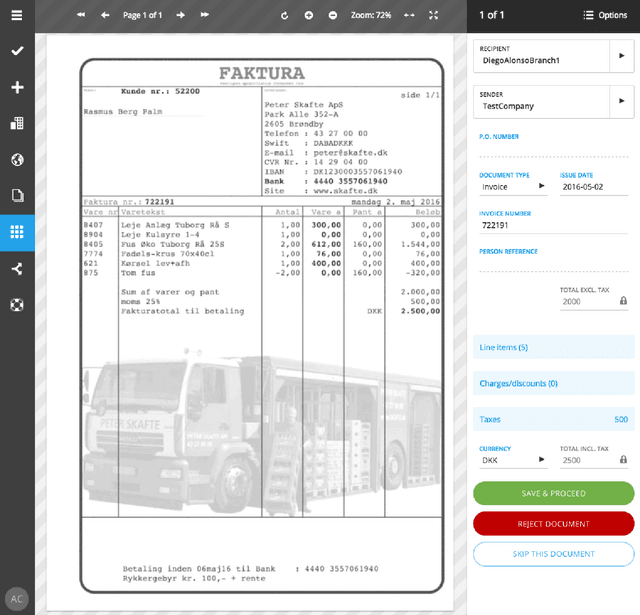


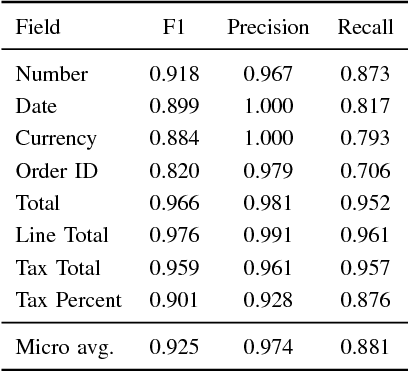
Abstract:We present CloudScan; an invoice analysis system that requires zero configuration or upfront annotation. In contrast to previous work, CloudScan does not rely on templates of invoice layout, instead it learns a single global model of invoices that naturally generalizes to unseen invoice layouts. The model is trained using data automatically extracted from end-user provided feedback. This automatic training data extraction removes the requirement for users to annotate the data precisely. We describe a recurrent neural network model that can capture long range context and compare it to a baseline logistic regression model corresponding to the current CloudScan production system. We train and evaluate the system on 8 important fields using a dataset of 326,471 invoices. The recurrent neural network and baseline model achieve 0.891 and 0.887 average F1 scores respectively on seen invoice layouts. For the harder task of unseen invoice layouts, the recurrent neural network model outperforms the baseline with 0.840 average F1 compared to 0.788.
End-to-End Information Extraction without Token-Level Supervision
Jul 16, 2017
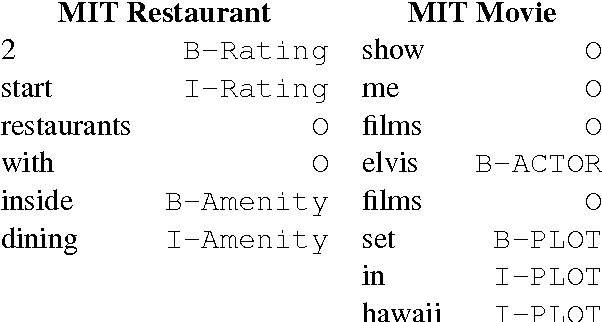
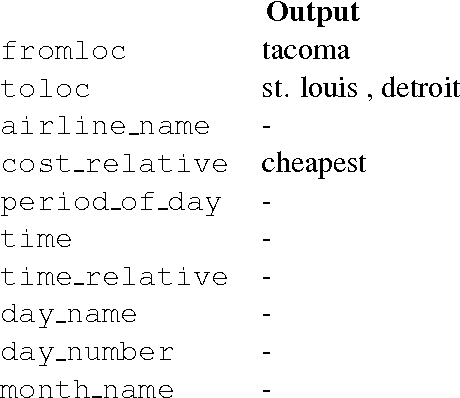
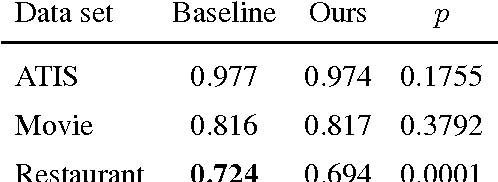
Abstract:Most state-of-the-art information extraction approaches rely on token-level labels to find the areas of interest in text. Unfortunately, these labels are time-consuming and costly to create, and consequently, not available for many real-life IE tasks. To make matters worse, token-level labels are usually not the desired output, but just an intermediary step. End-to-end (E2E) models, which take raw text as input and produce the desired output directly, need not depend on token-level labels. We propose an E2E model based on pointer networks, which can be trained directly on pairs of raw input and output text. We evaluate our model on the ATIS data set, MIT restaurant corpus and the MIT movie corpus and compare to neural baselines that do use token-level labels. We achieve competitive results, within a few percentage points of the baselines, showing the feasibility of E2E information extraction without the need for token-level labels. This opens up new possibilities, as for many tasks currently addressed by human extractors, raw input and output data are available, but not token-level labels.
 Add to Chrome
Add to Chrome Add to Firefox
Add to Firefox Add to Edge
Add to Edge